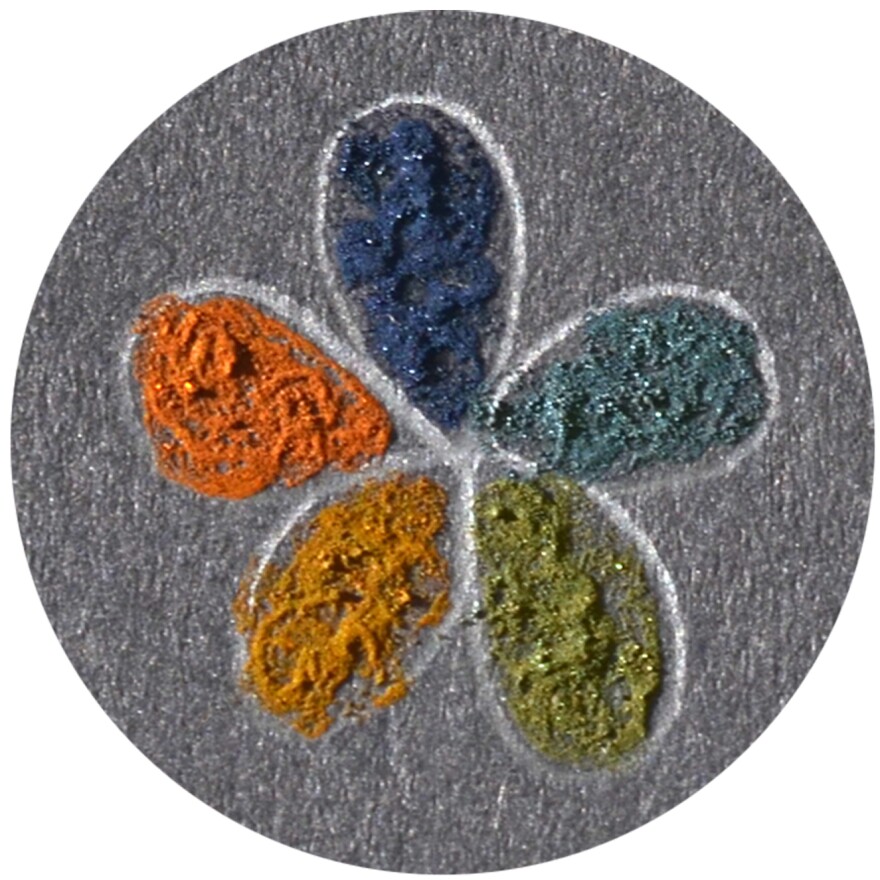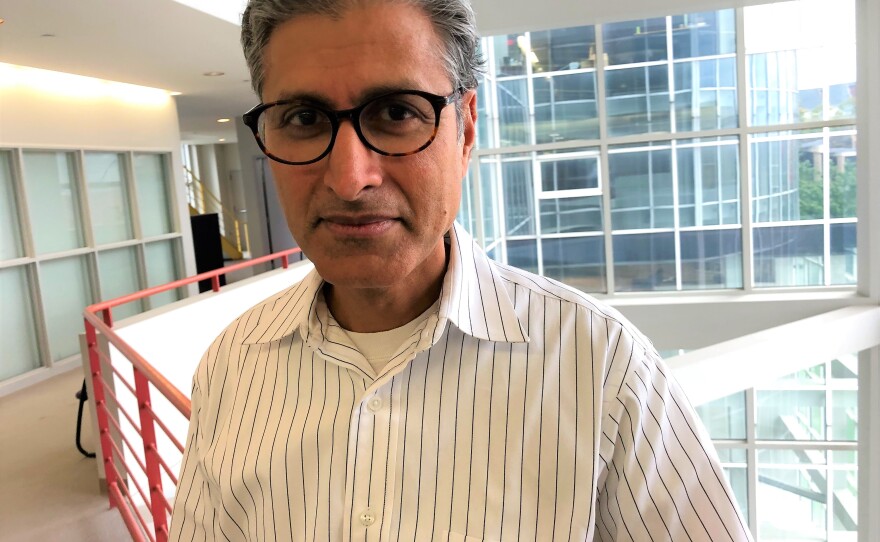A team at the University of Akron has developed a new type of non-toxic pigment inspired by the vibrant colors of bird feathers.
In this week’s Exploradio, WKSU’s Jeff St.Clair reports that the success came as a surprise to the researchers.
We’re in the lab of polymer scientist Ali Dhinojwala, but we're not here to talk about polymers.
Instead, he lays out a collection of bird feathers. We see shimmering blue feathers from a duck’s wing, tropical colors of bright green, orange, and yellow, plus the familiar brown hues of a wild turkey.

Dinojwala says the colors, from crow black to canary yellow, all come from the same three starting materials, "melanin, keratin, and air.”
Keratin is the protein that makes up feathers, as well as hair, horns, and fingernails. Melanin is the dark brown pigment that gives color to our skin.
“But in this case of bird feathers," says Dhinojwala, "they take melanin and they mix it with keratin, and they self-assemble in very beautiful patterns. And those patterns essentially reflect light in a very unique way and that creates the vibrant colors that we see in feathers.”
Dhinojwala and his crew spent a couple of years examining how nature does it with former University of Akron colleague Matt Shawkey.
Dhinojwala says that investigation led to, "ideas on how to create a synthetic analogue of the color that we see in birds,” a process called biomimicry.
Self-Assembly of Melanin Particles
“This is the melanin,” says Dhinojwala, holding up a small bottle filled with a dark brown liquid.
But instead of being coated with a layer of keratin as in nature, his team encapsulated the melanin particles in silica, basically a thin layer of sand.
But how do we go from a dull-brown liquid to a vibrant color?
Again, Dhinojwala looked to the birds for inspiration.
“The key to it is placing these melanin particles in a certain periodic spacing. So imagine you’re to lay it out in certain stacks in a certain way, and that process is the key to creating colors.”
But while birds are able to grow those structures in their feathers, his team had to find another way.

Grad student Weiyao Li demonstrates the process. She adds a type of oil that partially mixes with the melanin solution and gives it a good shaking. The oil and water form a froth called an emulsion.
In the emulsion the silica-coated melanin particles become trapped in tiny droplets of oil.
“It’s like salad dressing,” says Dhinojwala, and as they separate, he says, "they form these supra-structures which have a bunch of particles assembled together.”
He shows me a high resolution electron microscope photo of the tiny spherical structures. Each one looks like a baseball made of BB’s. Dhinojwala says the little space between the smaller balls is where the magic happens.
Non-Toxic Structural Colors
Laid out before us is a rosette of brightly hued powders - blue, green, red, and orange - all made from the same simple materials, melanin and silica.

Dhinojwala says the color comes from variations in the thickness of the silica layer.
Unlike pigments we see in paint and plastics, colors in nature are often what we call structural colors, meaning the color comes from the way light is reflected not from the pigment itself.
Dhinojwala is excited about the possible uses for his bird-inspired colors. He says since it's food safe, we can eat the melanin pigments. He’s also gotten several overtures from major cosmetic companies.
“The other advantage of structural colors," says Dhinojwala, "is that they don’t fade with UV light.”
Cosmetics in Space?
That UV protection has caught the interest of the Department of Defense.

He’s part of a group that’s received an $8 million grant to unlock the mysteries of melanin and how it provides protection against the sun’s harmful rays, and other dangers, like radiation in outer space.
“In fact NASA and other organizations are also very interested in properties of gamma protection that melanin has," he adds.
But Dhinojwala says none of these uses were motivators for beginning the work. He says it was driven by curiosity, not outcomes.
“It’s really a free-flowing thought process which has actually led us to this innovation,” he says.
Dhinojwala says this process of open exploration is becoming more rare in academia and elsewhere, but the results, he says, can be extraordinary.







